.
Virtual Worlds Necessitate Corporations Develop Personality followed by Gary’s top 15 tips to becoming human in the metaverse (and 2D socio-nets).
I have been doing a lot of work moving brands, properties and companies into social virtual worlds and networks recently and in the process I am often forcibly reminded of the divide that naturally exists, in these new worlds, between ‘the corporation’ on one hand and ‘the individual/community’ on the other. The 3D Virtual World is being used in many ways by the natives (aka the public, a bad definition I know), living out their fantasies in a very chaotic but social way. In strong contrast to that we have companies who are naturally bland, characterless, faceless and in the worse cases anti-social.
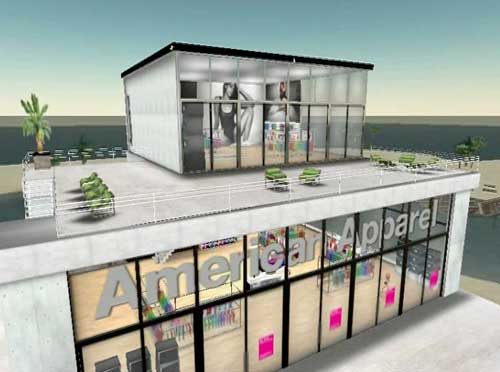
It is not all bad as we are seeing something very positive emerging and being played out as both sides manouver and become better aligned. We are also seeing the next phase as the early mistakes pull out and leave the new entrants to learn from those errors. So I have collected some of my thoughts below on how companies need to approach the development of their personality.
First though let me explain the title of this piece with two simple examples. I was struck, like many by the documentary film ‘The Corporation‘ which began by explaining at great lengths how similar the actions of large organisations (if they were looked at as an individual) are psychopathic in nature. I quote the definition they use as the basis to extemporize and a taste of that from Mr Monks.:
PERSONALITY DIAGNOSTIC CHECKLIST:
World Health Organization ICD-10. Manual of Mental Disorders DSM-IV
– Incapacity to maintain enduring relationships
– Deceitfulness: repeated lying and conning others for profit
– Incapacity to experience guilt
– Failure to conform to social norms with respect to lawful behavior
– Callous unconcern for the feelings of others
snip…
“A corporation is an externalizing machine in the same way that a shark is a killing machine. Each one is designed in a very efficient way, to accomplish particular objectives. In the achievement of those objectives, there isn’t any question of malevolence or of will, the enterprise has within it, and the shark has within it, those characteristics that enable it to do that for which it was designed.” Robert Monks, Corporate governance advisor

Of course I am being deliberately provocative in stating this but in the context of an immersive fully rendered world there is a high degree of potential for levels of the above to continue unabated. If a slightly anachistic documentary is not to your taste then the second one will hopefully clarify. “Hello I’m a Mac and I’m a PC” – or translated “Hello I’m Apple and I’m Microsoft (Windows)”. We all know what that series of ads is really saying and it leads into the main part of my post nicely. The PC character in those ads represents dysfunctionality (mild pyschopathy), corporate stubborness, overweight, bad eyes and old school ‘tech’ thinking, whereas the cool Apple dude represents the opposites – friendly, balanced, youthful, innovative and even understanding of PC. Those ads are great fun but they become very serious for the corporations when you start to consider the inhabitants partying in Virtual Worlds deciding which one would to hang-out with. Commercial organisations need to have character and an indentifiable personality in the metaverse and cannot rely anymore on corporate slickness, blandness or aloofness. To engage with audiences and inhabitants in these spaces they need to learn how to be human.

So I have collected for all those corporations out there wondering how to accepted in the 3D and for that matter the 2D social network, my top tips for those thinking of jumping in or those who are wondering why things are not going right. So before you get hung up on demographics, ROI, KPI, psychographics or the latest fad platform consider what it means to be human and authentic!
One: Understand the Culture by Spending Time There
Make sure you have people who know the culture of the world and who have spent enough quality time inworld across the whole gamut of experience. Do not rely on reports from tourist consultants, so-called emerging media experts who can see an opportunity and sell themselves as folk who know about the world and who may have set up an account and visited it on a few odd occasions. Ask them how long per week they personally use the social network. If it is 10-20 hours then keep talking, if they pop in for 10 minutes a day when they are not busy or taking the kids to school then give them a miss – you will get better advice by going inworld yourself and talking to experienced inhabitants. Also make sure the people who you employ to represent you inworld are extremely familiar not just with the local space they will be hanging around in but the whole social world. Make sure they have a passion for it and are not being forced to go in there – so they can talk to inhabitants about other spaces from experience. This will engender trust and more importantly friendship.

Two: Be A Part of the Conversation
It goes without saying that you have to be in it to really be in it. Corps can’t sit on the sidelines or be the obligatory wall flower, spying on others at the party. They have to be in there talking, befriending and listening. Just being present is not enough to integrate properly. I have seen many companies entering a space who don’t join or setup groups, never go to other events and meet others which is odd given this is a social network – no different to those dive bar, industry get-togethers in the real world. Finding someone who is passionate in your organisation and who can then commit time is the only way to go. Don’t become the officious big brother, watch-dog. With the advent of voice in Second Life new factors come into play of course. Your company representatives are in there having real time phone conferencing in effect with anyone and everyone who decides to drop in. Think carefully about the things you need to say vs those that will endear you to the community. It makes a lot more sense to talk about the shared experience than saying how wonderful your company is. Organise specific events where you will be expected to talk about the brand vs trying to constantly slip it into social discussion.

Three: You Are What Your Environment IS
Just as we can tell an individual from the places they visit or the state of their work and social rooms, the same holds true of companies. Your corporate personality is reflected in the spaces you build. If you look at the native environments vs the corporate ones in the metaverse you can see a world of difference. The commercial ones are often built by a team which has been steered by many, many meetings that have sand-papered away all the risk and character. They end up being designed by committee and as such are not resonant with anyone – apart from the corporate lawyers who can only see ‘safe’. Whereas an organic, rich, deep welcoming space has the opposite effect. I have talked for two years about over representation too. If you build a clone of your office, complex or city you are stating two things – 1) corporate vanity and 2) lack of innovation. You should take a certain level of risk by creating environments that engage before they try to impress or show business control.

Four: Corporate Avatars Need to have Character
This is a critical point in how to be human in these spaces. Have avatars that have a personality, meaning make sure the person on the other side of the avatar is not some bland company customer relations person who can only talk about the business parrot style. This is the opportunity for your company to really shine and show a different side to herself. Oh yes the lawyers will be screaming ‘disclaimer’ from the rooftops. Well fine go for it and to be literal, have a permanent sign on your t-shirt with the obligatory “the views I express are mine and not that of…” and so on – not suggesting you do that precisely, but you get the point. A community will only start to connect when ‘company’ characters are present. Think of the Virgin empire. They shout personality, that youthful exuberance, those Branson clones – allowing the person inside to come out. They are sadly let down by having to wear the uniform but in these environments you don’t have to be the photo-realistic clone of your real self. Do what the natives do and be imaginative with your representation and the words you deliver.
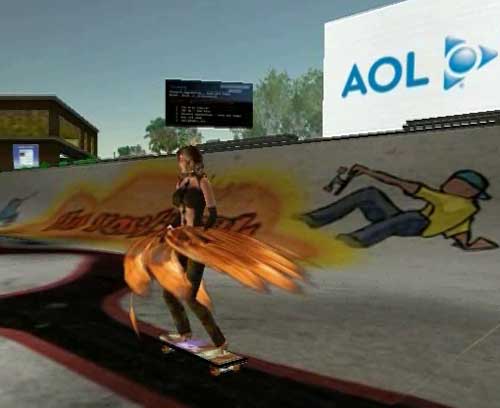
Five: Listen, Listen, Listen and Respond
Corporations find it hard to respond because anything of significance has to be rubber stamped by people that all too often have no idea what it really means. “All the inhabitants want SkyDiving competitions every Sunday” – passed to the lawyers who spend weeks working out the liability aspects of that, what if someone gets injured can they sue – until someone chirps up “actually no one can be harmed” and even then they look into psychological torture. By this time the residents are already running competitions on their own land or with a more responsive competitor. Another aspect of listening is not pushing. Too many corporations think that if they blog or stand in the crowd and talk then they are mixing with the web 2-3 communty. They are not – they are pushing it one way and unable to listen to the replies and respond. They become an incarnation of traditional broadcast media. A simple rule here – Do Not Talk in the Community Unless you have the Mechanisms to Respond. Sadly so many corporations just don’t respond to suggestions or in the worst cases do not even acknowledge. This is the most disenfranchising thing there is for someone who is starting to want to make things better, to be ignored by the administrators. This requires some sensitivity at the admin level, which is often lacking if they are hired help or jaded managers.

Six: Rich Kids Shouldn’t Copy
Every ‘expert’ in marketing in Second Life say bring something of value to the community – which can only be defined if you know the world. It may already be there. But even more important is to bring relevance and something new. It is OK initially showing off like the rich kid with some wonderful interactive toys you have bought or giving lots of ‘branded’ things away but you need to go way beyond that. Do something completely different and potentially on a grand scale. The advantage you as the corporation have over the natives is that you really are the rich kid on the block. So don’t set up a tiny cool drinks dispenser, or a shop sized office or a beach resort – be bold and consider multiple islands that offer rich immersive experiences (see previous post on this). You can still be rich and relate to the community – give them places to tell new stories. Too many times I hear “Oh yes the new CorpX sim is OK, the usual shops, club, offices but bit boring and here is the baseball cap – detach”. Offer things that fit with your brand but doesn’t contradict it – become almost like a friendly, approachable benefactor. Also be wary of just buying things that many may have experienced already. Plagiarism is rife in social virtual worlds because of the scale, most people are not expected to get around that much so there is a certain complacency that corporations think that as they are bigger than the others kids, they can ‘nick’ the idea. The community is very sensitive to this. Corporations without imagination are just rich kids, not imaginative rich kids.

Seven: Be Consistent and Beware of Real World Journalism
Authenticity is about being consistent and not schizophrenic. You will find it hard to survive if you are having conversations in these social networks as one persona then in the real world a journalist requests an interview in which you talk about the community as folk to be manipulated. Most Second Life journalists understand this and will often do interviews inworld, the ones to be aware of are the attention seeking real world journalists who are after something sensationalist to prop up their dwindling traffic rating. Most of these haven’t the slightest idea about integrating into social networks (apart from their own) and will not print anything to do with ‘Corporation Working Well with Community’ stories – they want ‘Community Griefers Attack Corporation’ ones, they sell. Keep well away from that kind of fiction.
But consistency of persona is hard to do across the many social networks as many are abstract (in other words, the 2D, non-real time facebook are a series of panes that supposedly make up who you are) – in the metaverse it is extremely close to real life. What you say, do and who you relate to give real time feedback to those around about who you really are – corporate robot or passionate person. Inhabitants like to come back to places where the ‘general’ experience is known. If they enjoyed it once when they come back they don’t want a different character in charge who is dull or uninterested in them. This requires great effort on the part of the corporation to set a style of interaction with its visitors which must be kept consistent.

Eight: Do What the Natives Want
Social Virtual Worlds like Second Life and Sony Home are mostly about shopping, media based activities, lifestyle emulation and socialising. As a corporation or brand sitting on top of, or rather inside an existing companies infrastructure you need to be careful to not do what everyone is already doing. There is an attraction in setting up an environment and then setup rental land for homes and shops because that is what inhabitants seem to want. But that says more about the social network than you bringing something to it. It also pangs a little of laziness and doing something tried and tested. The natives also love to make things (well 30% in Second Life) so be really active in encouraging and rewarding that. Get them to design and build your branded play area with you.

Nine: Keep Reinventing Yourself and be Fresh
Remain consistent in character but always have new things happening to show how dynamic you are. Don’t limit it to dances, music concerts or presentations (in SL you can get these everywhere) but go down to the level of environmental decoration, the signs, subtle changes to the spaces and tell people about those changes. But the most critical element of being dynamic is to listen to suggestions from your visitors, do changes on the spot and even do personal fit outs for the loyal inhabitants of your space. Many organisations fail in Second Life by launching with something which then sits there and decays (with no updates). People get bored with people that don’t change and will drift away for new pastures. Invite suggestions for change but always have the resources within your organisation and with your developers (who will often know a lot more than you – having time to spend inworld) to do regular facelifts.
Ten: Share Your Assets and The Paradox of Risk Aversion
Inhabitants of your space will feel more inclined to stay if you provide them with some chance to own parts of it through the opportunity to affect it. Think of this as the rich kid who invites the world onto their mansion grounds for a party. Do not be the party host that goes around sweeping up every time someone drops a few crumbs, they will not return. Instead accept a certain amount of chaos and allow them to influence and have a sense of ownership. You will get more respect for empowering them and allowing an element of free reign. But so many companies are terrified of ending up with egg on their face through griefing or being sued for some copyright infringement that they lock everything down. This just says you as an individual are controlled by lawyers, who cannot express their own mind who as we know are the worst folks to have in any social group.
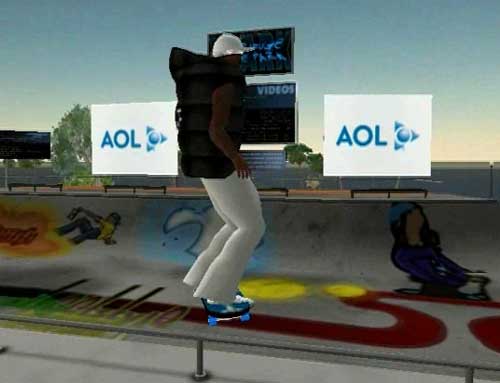
Eleven: Don’t Always Try to Be the Centre of Attention
Companies that expect their ‘characters’ to be in control and always leading the conversation will be seen as anything from show off through to bully. Social networks are democratic, your brand is as important to the inhabitants as their own identity or groups they belong to. Do not metaphorically walk into a crowd and pronounce your self-imposed importance, this jars with the whole premise of social networks.
Twelve: Story Environments
By all means create spaces that are really great to hang out in for long periods of time but also try to give the place some history and depth. When your not around you need the evnironment to speak for you by speaking, literally in some cases, with the visitors. So embed or write some history into it, create some myth, make it feel like you have been around for a bit. This depth is attractive to those visiting. See my wikipedia article on this topic here which covers ways you can give yourself (represented by the environment) some back story and depth.
Thirteen: Help create a Trusted Community
If you have followed some of the above advice then you will start to become the space to be, full of character, innovation and depth. As the traffic increases you just wont be able to manage it all by yourself and tensions can result. It is not a bad thing for the company characters to fly off the handle occasionally because of being over stretched with requests, endless IMs and so on – it shows they are human. But this is also a warning sign to start to create tiers of help within the community, namely the most loyal and immersed inhabitants themselves. Give them limited powers but ones that has enough responsibility to make them feel empowered. Set rules up for them that are part of a discussion as to the best ways to operate. If they make mistakes do not slap their wrists, change the framework of how they can operate. Of course the lawyers kick in again here with non-employee representatives (many of whom may not be know in the real world) – but again that wonderful disclaimer can be pulled out of the hat. To think you can manage without community support at admin levels means you will be over stretched as a person corporation, become stressed and in the end find it more comfortable to not be in there in the first place – contrary to all the above.

Fourteen: Entertain
It is fine being a wonderful administrator and organiser but you will be looked on to provide entertainment sometimes. You can’t expect your community to just do it all the time. You need to step in on a regular basis to show that you can put on big events. This encourages the relationship and more importantly suggestions as to how to make the events and activities better or develop new ones.
Fifteen: Don’t Listen to Too Much Advice
I would recommend listening to advice from trusted developers who have a track record for creating really good social spaces and not listening to out of world consultants. But in the end go with your gut reaction based on your personal experiences about what you think fulfills the needs of existing inhabitants in these 3D social networks. Having a genuine approach will most likely create a genuine response from your potential community. Remember though at the start you are a tourist and as such not doing anything until you are ready makes the most sense.
Gary Hayes is the Head of Virtual Worlds for the Project Factory and Director of the Laboratory for Advanced Media Production, LAMP. He personally produced and built the top brand in SL Telstra’s ‘The Pond’ and ABC TV (top ten) in several statistics (New World Notes and TPF) over the past 6 months. Recent other launches include Thursday’s Fictions and Melbourne Laneways.
Posted by Gary Hayes © 2007 All Rights Reserved.


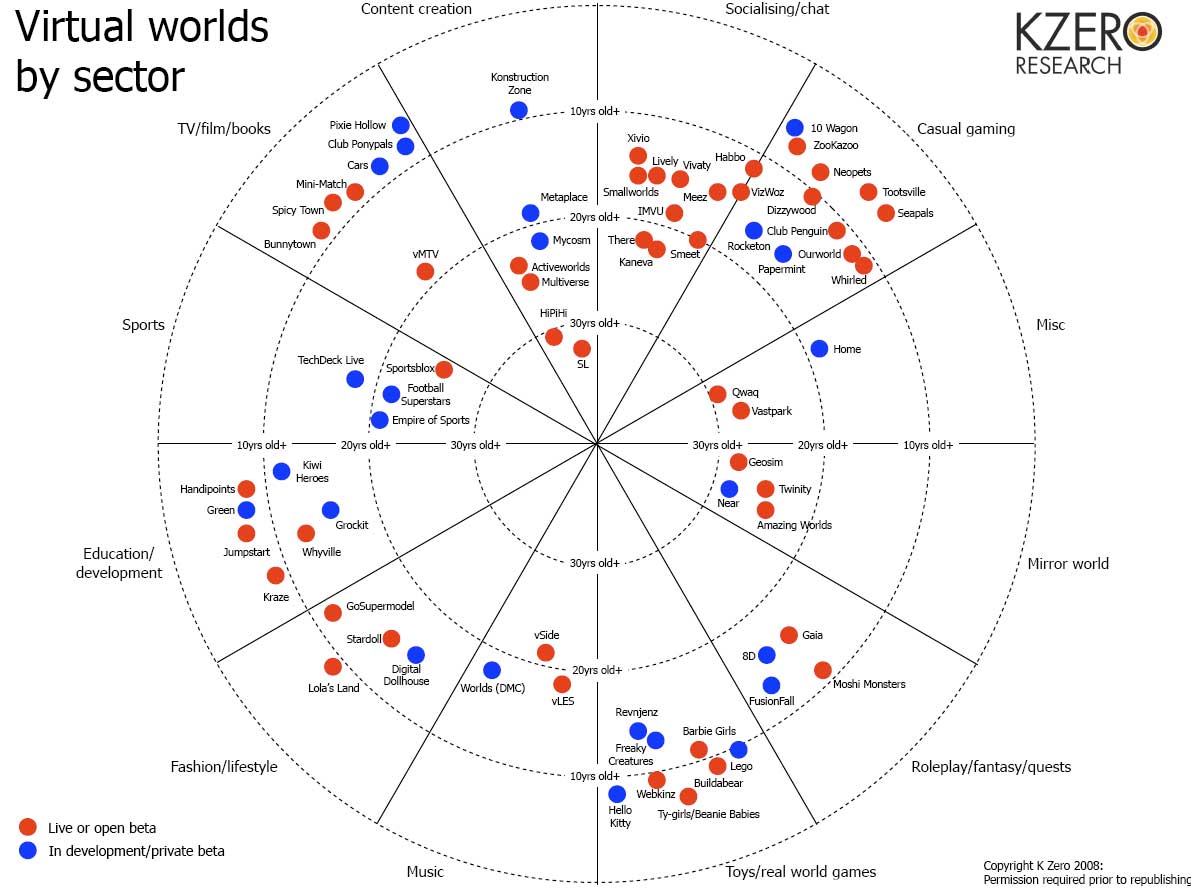
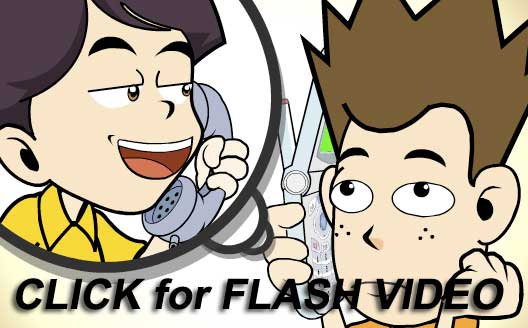
@markhjones-some truth, SecLife ATM not best platform for corps tinyurl.com/5gmw2d hence my recent vid showing LOTS of better opts
RT @garyphayes Corporations in Social Virtual Worlds – Psychopaths or Welcome Friends? | PERSONALIZE… bit.ly/DvUtF (via @tweetmeme)
RT: @GaryPHayes: RT @garyphayes Corporations in Social Virtual Worlds | PERSONALIZE… bit.ly/DvUtF (via @tweetmeme)
RT @GaryPHayes: RT @garyphayes Corporations in Social Virtual Worlds – Psychopaths or Welcome Friends? | PERSONALIZE… bit.ly/DvUtF
Corporations in Social Virtual Worlds – Psychopaths or Welcome Friends? bit.ly/ZO1Jo
RT @WorldSimTerra Corporations in Social Virtual Worlds – Psychopaths or Welcome Friends? bit.ly/ZO1Jo #Metaverse #Corporations